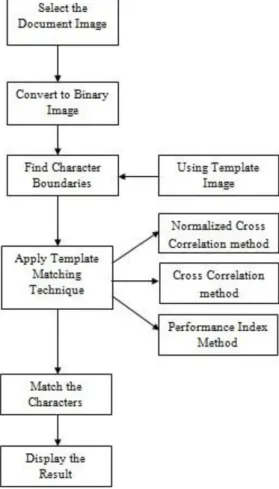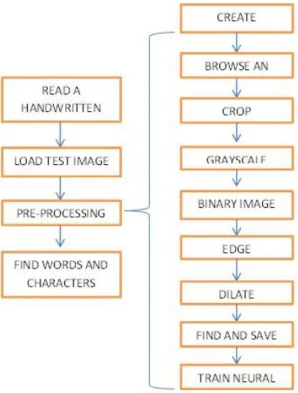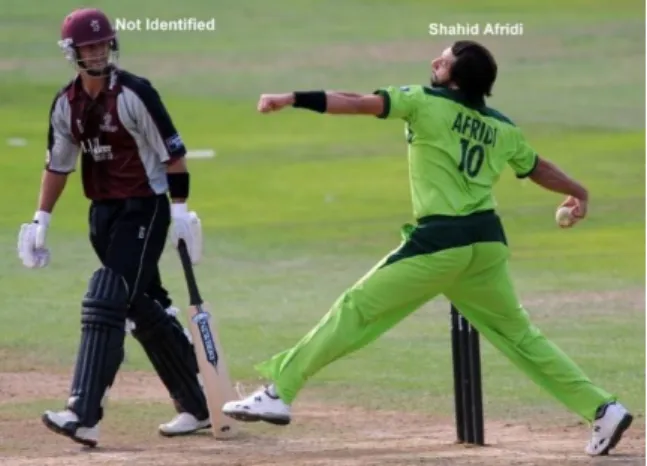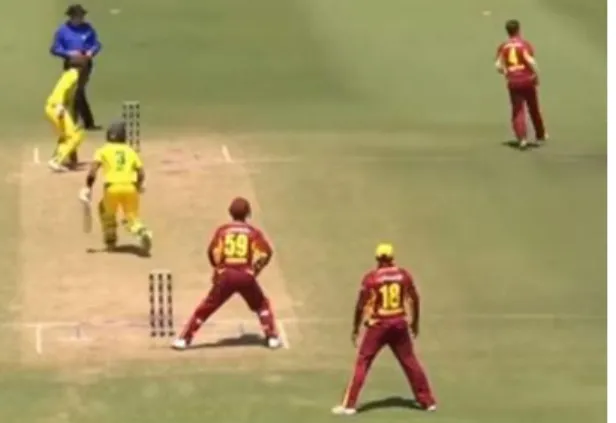This thesis entitled "Cricket Played Identification by Jersey Color And Number Recognition", submitted by Hares Ibne Kashem, ID No to the Department of Computer Science and Engineering, Daffodil International University, has been accepted as satisfactory in partial fulfillment of the requirements for the degree of B.Sc. Department of Computer Science and Engineering Faculty of Natural Sciences and Information Technology Påskelilje International University. I would like to express our deepest gratitude to Almighty Allah and the Head, Department of CSE, for his kind help in completing our project and also to other faculty members and staff of CSE Department of Daffodil International University.
I am thankful to my entire colleague at Daffodil International University who participated in this discussion while completing the course. In recent times, many analysts have sought to use computer vision and machine learning methods to perform - a player's recognizable proof in handball, volleyball and football, cricket, etc. In this paper, I investigate the suitability of a player detection framework that knows the visual properties of an image in an entertainment space.
I will use MAP recognition to separate pullover locations in the image, image division for additional procedure of the image, and an OCR-based number detection technique to determine the number of players.
BACKGROUND
Scope of the Problem
The fate of taking photos involves checking the skies for other life in space. Additionally, new, insightful, automated types created entirely by research researchers in different countries of the world will include advancements in image preparation applications. Due to advances in image preparation and associated advancements, in a few decades there will be a large number of robots on the planet, changing the way the world is monitored.
Advances in image manipulation and man-made brain power will include spoken directions, anticipating the data needs of governments, interpreting dialects, observing and tracking individuals and things, diagnosing ailments, performing medical procedures, rediscovering abandonments in human DNA, and programmed management of all forms of transport. With increasing power and complexity of current registration, the idea of calculation can pass as far as possible and in the future image preparation innovation will progress and the visual arrangement of the human can be imitated.
Challenges
RESEARCH METHODOLOGY 3.1 Introduction
Color Detection with RGB
The scores did not fall within the range of acceptable values, and then the pixel is assigned an RGB value of 0, meaning it is not a jersey. Indeed, despite the evacuation of the group and its wide range of shades, there were still some false positives associated with this technique. The calculation was not robust to the typical selection of images that could be captured due to factors such as edge, gloss, editing, etc.
Number Detection With MAP Detector
Then, the features of the image and the sport are manipulated to isolate the digit for image processing and identification. Morphological image processing is combined to separate the digits from the rest of the image, and an actual concatenation strategy is used to identify the digits with an extended confirmation rate against the image [3.2]. In an accompanying proposal, I explore the feasibility of using shading recognition in MATLAB to assist the visually impaired.
The analysis of algorithms is extensively reviewed by Ephrati & Navid Moghadam Page(2,3) [45]. I tried to detect the shirts in different lighting conditions to fully capture a wide range of RGB values for the most extreme look of a sweater's difference. Preferably, this will create a veil of the image, where the sweaters are white and the rest is dark, as shown in Figure [3.2].
With that rationale, I will discover the districts with the five largest territories and eliminate those that do not fit that basis.
Number Recognition
I'll stick with the amount of player and non-essential details from the sweatshirt, which is generally the player's logo or name, depending on whether the player is facing forward or backward during the photo.
Template Matching
- Convert to Binary Images
- Find Character Boundaries
- Cross Correlation
The method of converting the shadow image into a high contrast image is known as a dual image. According to the R, G and B value in the image, the dimming scale estimates are established, and in addition, the dark image is obtained (Figure [3.3). Format image is a small segment of an info graphic; it is used to discover the layout in the given research image.
Where f is the info image and t is the layout image, the whole above x, y is below the window containing the component t located at (u, v). On the off chance that the term ∑f2(x, y) is approximately consistent, at that point the remaining cross-connect term. Above all else, if you have no coordinating element in the picture, you will get a match in any case, compared to the max of ncc.
Likewise, this coordination is relative variation: an adjustment fits as a fiddle/estimate/shear etc. of article w.r.t. One factor that appears to affect the accuracy of layout coordination is the point of the number.

Number Detection with OCR
The slight tilt causes an absence of arrangement that will build the opportunity of a false positive. I've found this methodology to be undeniably more reliable than having classifiers for digits 0-9, since two-digit numbers aren't isolated around in every case, so they'll generally cause missed recognitions. In addition, distinguishing each digit independently will lead us to impose imperatives on the spatial plan of recognized digits that are difficult to confirm in the situations where numbers are not excellently flat.
Each detector goes as a division, enabling us to directly perceive what the specific number is that has been identified. Each classifier is prepared with 50 positive and 100 negative precedents, where the latter is randomly selected from the images, while the former are physically edited. Other positive models are created with realistic designs or obtained with small twists of a few selected images.
The analysis of the algorithms has been thoroughly reviewed by Marco Bertini, Alberto Del Bimbo and Walter Nunziati [48]. For two-digit numbers, I therefore use two parallel OCRs to recognize the jersey number all the more efficiently. I can describe jerseys as having locations inside that have a greater-than-solidarity ratio of height to width, which is numbers.

Noise Removal
- Fuzzy filter for Impulse noise
- Structure of Impulse Filter
Sorted vector (ascending order) of window elements shown above. Calculate the median (M) of the above vector. Arrange all pixels in the window that have di ≤δ1 into a new vector and calculate the mean (med) of it. The above median (med) is used to find the correction term for each pixel in the noisy image.
The connections between these shading parts are used to determine the proximity of the focal point to neighboring pixels. The idea of motivational excitement is arbitrary as it destroys some pixels and leaves others intact. It may be noticed that the excitement of the drive is comparable to the highly repetitive substance of the images, such as edges and fine details.
Three distinctive entry capabilities, viz. Large, Different and Extreme are used to separate the hard pixels from the high repetition stuff.
The First Sub filtering
The Second Sub filter
- Dataset Properties
- Descriptive Analysis
An additional effect of doing this is that the group logo hovering over the player quantity will be evacuated. In the event that everything goes as expected, only the players will be considered for the calculation. I chose to exclude images where the number was deflected or altered due to the inability to calculate for such highlights.
In the picture above, I can see a screenshot of a diversion between Bangladesh and England. Despite the fact that there was tremendous consideration in trying to make a hearty calculation to distinguish players, there were many components that reduced the robustness of the calculation. Most of the time, the OCR engine would misidentify a number, which would cause a wrong player ID.
The OCR engine is powerless against any errors in the delineation of the number in its connection to the layout. For example, if the identified number is reversed in any capacity, the aftereffects of the OCR identification will often be inaccurate. The MAP indicator would distinguish vast districts of unrest as Bangladeshi players, and the preparation between MAP discovery and OCR identification could not allay the commotion.
This grouping of cases conceivably leads to something almost identical to Figure [4.2], where a "ghost" player is distinguished. Bloats on the jersey can also cause problems, as they can cover the number itself and cause errors in OCR recognition. These errors can cause no player to be perceived in the image, as shown in Figure [4.3].

CONCLUSION
1] M Saric, H Dujmic, V Papic, N Rozic, "Localization and recognition of player numbers in football video using HSV color space and internal contours", World Academy of Science, Engineering and Technology 43 2008. Player identification in interactive sports scenes using of region space analysis prior information and number recognition. In Proceedings of the Fifth International Conference on Internet Multimedia Computing and Service – ICIMCS '13, page 113, New York, New York, USA, 2013.
Li et al., “Fast and Robust Human Detection and Tracking Based on Omega-Shape Features,” ICIP, 2009. Gao, “Improving Particle Filter with Support Vector Regression for Efficient Visual Tracking,” IEEE International Conference on Image Processing, vol. 19] Khan SM, Shah M (2006) A multiview approach for people tracking in crowded scenes using planar homography constraints.
20] Okuma K, Taleghani A, de Freitas N, Little JJ, Lowe DG (2004) An amplified particle filter: multi-target detection and tracking. Bilmes, 'A Gentle Tutorial of the EM Algorithm and Its Application to Parameter Estimation for Gaussian Mixture and Hidden Markov Models', TR-97-021, Berkeley, April 1998. Player classification in interactive sports scenes using prior information, region space analysis and Number Recognition.
Analysis of the distances covered by the resting division Brazilian soccer players obtained with an automatic tracking method. 44] Marco Bertini, Alberto Del Bimbo and Walter NunziatiDipartimento di Sistemi e Informatica, “Player identification in soccer videos” University of Florence Via S. 45] Ephrati & Navid Moghadam, in the thesis of basketball player identification by jersey number and page (2,3).
